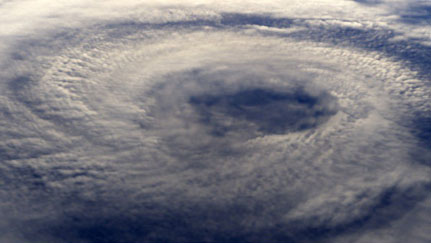
Katrina, Andrew, Ike, Iniki and Camille. These names haunt coastal residents as being among the most destructive hurricanes to hit the United States.
Hurricane season happens between June 1 and November 30 every year, with the most active months coming between August and October.
Each spring, expert forecasters with the National Hurricane Center and Colorado State University estimate the intensity of the upcoming hurricane season. But they can not predict whether or not a storm will impact you or how well your home may survive a storm. Mitigation matters and Nationwide encourages you to take action to prepare yourself for what may come.
Are you prepared for the next hurricane?
Your safety and that of your family is of primary importance, we recommend you take the following precautions well in advance of a hurricane:
- Create an evacuation plan so you know where to go if asked to evacuate your home.
- Maintain a list of contact information of all family members and friends
- Keep a disaster preparedness kit that includes water, non-perishable food, a first-aid kit, a battery-powered radio, flashlights, extra batteries, a can opener, dust mask, moist towelettes, garbage bag, wrench or pliers, whistle, manual can opener, cash, mobile device chargers, and extra keys to your home and vehicle(s)
- Establish emergency plans for your pets, vehicles, personal property and watercraft
- Have copies of your insurance policies ready to take with you if you need to evacuate your home
Properly ensuring that you are ready for a hurricane includes taking steps to strengthen the home to withstand the force of winds and storm surge. The insurance Institute for Business and Home Safety provides great resources and information to help homeowners understand their risk of hurricanes and what specific actions you can take.
According to IBHS, the top five recommendations to reduce property damage are:
Strengthen your roof: Ensure that the roof deck is securely fastened to the framing with proper nails and mechanical fasteners. Any loose shingles should be re-adhered with roofing cement to minimize the chance they may fly off.
Protect the home openings: Install permanent shutters to protect windows, doors, skylights from flying debris and wind. Strengthen the garage door by replacing it with a pressure-rated model or install a bracing system to prevent the door from failing. Seal all cracks, holes and gaps around the home to prevent water from entering and causing serious damage.
Prepare Your Surroundings: Make sure items around your home can't become wind-borne missiles which can cause significant damage. Prior to a storm remove patio furniture, yard decorations and anything not securely fastened.
Ensure your home is tied together: Create a continuous load path, which means the roof is connected solidly to the walls and the walls to the foundation. This is critically important so that a home can withstand the pressure of winds and not crumble or blow apart.
Elevate your home: Check with local building officials to know the Base Flood Level in your neighborhood and determine if your home sits above that elevation, If not, consider hiring a contractor to elevate the structure one to three feet.
The Insurance Institute for Business and Home Safety provides a guide to prepare your home for a hurricane.
Nationwide offers this information to assist you in making decisions that can help mitigate your risk. While we cannot address every possible scenario or guarantee these tips will work for you, our goal is to support your efforts to protect yourself and your family. For more information, contact your insurance agent.